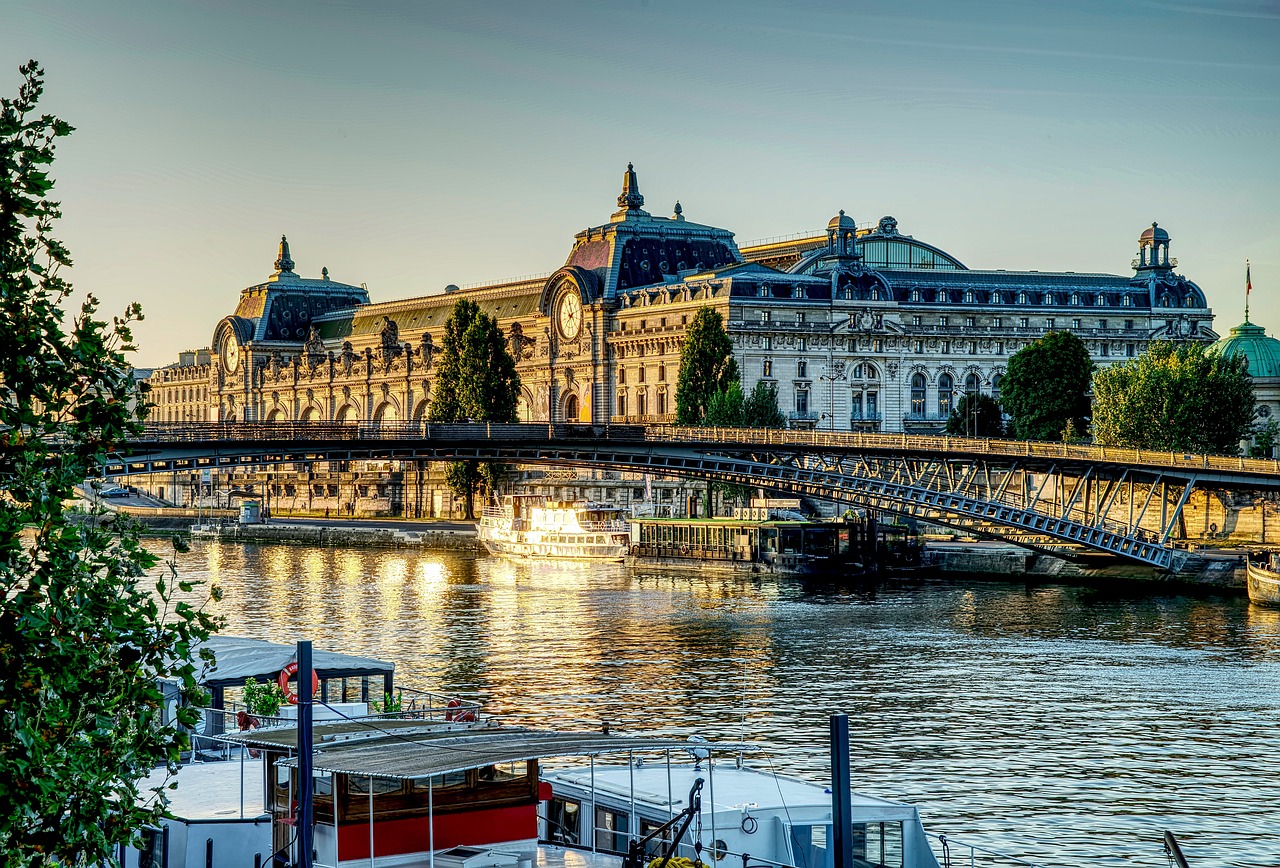Treasures of Paris: Top 10 essential monuments and historic sites (Series 3)
Having covered the splendour of the Iron Lady (the Eiffel Tower), the symbol of an entire nation (the Arc de Triomphe), a medieval fortress that became the world's largest museum (the Louvre), the most beautiful royal squares in Paris, the meeting place of Emily Cooper and Mindy (the Palais Royal), the birthplace of the stylish Napoleon III (the Opéra Garnier) and the cradle of Paris (the Île de la Cité), we conclude our tour of Paris' must-sees!
8/ Montmartre and the Sacré-Coeur
Montmartre, Montmartre, Montmartre ! The Parisian village fantasised about by the whole world welcomes millions of visitors every year, and it's not by chance.
Since the fire at Notre-Dame Cathedral in Paris, the Basilique du Sacré-Cœur is the most visited building in France (and probably the world!).
People often come here to admire the view from the top of the capital, 130 metres above sea level. Once you've made the most of it and captured the moment in a few selfies, step away from the tourist flow and wander through the narrow streets of the hilltop. You'll have no trouble getting a feel for life in what was still just a village on the outskirts of Paris in 1860.
Its etymology - although undecided - suggests that it was an important place of worship. Montmartre is thought to have come from Mons Martyrum, Monts des martyrs, or Mons Martis, Mont de Mars, in reference to the Gallic temple that may have been dedicated to the god of war.
At the end of the XIX. In the 19th century, Montmartre was mainly inhabited by workers, millers, vine-growers, ploughmen and the poor, recluse on the hilltop where rents were cheap. At the time, it was known as the "Montmartre maquis".
It was among these same people - offering wine and food to weekend strollers - that the first cabaret owners on the hill appeared.
In 1871, during the Paris Commune, Montmartre was the headquarters of the Communeux. The women of the hilltop ardently defended the cannons - left in place after the defeat by the Germans - that the French army had come to recover. So strongly, in fact, that they succeeded in rallying the soldiers to their cause.
Construction of the Basilica of the Sacré-Coeur began a few months after the bloody week when the Communards and Versaillais clashed in a bloody battle (25,000 people are thought to have died!). For historians, it is inextricably linked to this.
Even today, politicians on the left and right regularly clash over the basilica's status, whether it's a commemoration, a restoration project or a heritage listing.
The Belle Epoque is Montmartre and Montmartre is the Belle Epoque! The effervescence of the end of the century is inseparable from this legendary district of Paris, where the greatest artists of the era lived.

9/ The Luxembourg Gardens
Certainly one of the most beautiful parks in Paris, Parisians love to come and relax by the fountain, on the lawns or under the trees. For sunbathing, a picnic with friends, a quick lunch with colleagues, a game of pétanque or tennis... there's no better reason to relax in the Jardin du Luxembourg.
Around the pool, you can admire statues of great ladies such as Sainte-Geneviève, the patron saint of Paris, and Marie de Médicis, who ordered the construction of the Palais du Luxembourg in 1615.
The splendour of the Palais du Luxembourg is best admired from the Place André Honnorat, on the south side of the garden. Here, you can see the Statue Garden and the Italian palace in a single glance.
Why is it called "Luxembourg"? Before belonging to the Kingdom of France and then to the State, this land belonged to the Duke of Piney-Luxembourg.
The Musée d'Orsay was created in 1986, in the buildings of the former Gare d'Orsay (on the site of the Palais d'Orsay, burnt down during the Commune).
Its collection consists of works from the second half of the 19th century to the present day.. and early XX. century. It has without doubt the most illustrious collection of Impressionist and post-Impressionist paintings in the world. All of which makes it an absolute must-see in Paris!
Do you know where the statues on display in front of the Musée d'Orsay come from? From the old Palais du Trocadéro, built for the 1878 Universal Exhibition and demolished to make way for the Palais de Chaillot.
Walks in the most beautiful parks and districts, museums and monuments make up our top 10 Parisian must-sees. We hope you enjoy your visit, and as always, if you're short of time, call Parisi Tour!
For those who want to explore the capital in an immersive and authentic way, wander the bustling streets of the city with our exclusive " Paris on Foot: An Unforgettable Journey "Discover all its hidden treasures.
Our Citroën 2V tours take in many of the highlights of this magical city in record time.

Discover the fascinating history of the Pantheon with our a must-see guided tour of ParisThis is the perfect way to enrich your stay with fascinating anecdotes.
If you're planning a visit to the City of Light and want to make the most of your time, check out some interesting ideas at What to do in Paris in a single daySo you can make the most of all the major attractions.
Let our guides help you discover an intimate and surprising Paris
To explore Paris in a different way, consider a ride in a 2CV with Parisi Tour, a unique and unforgettable experience.
For a total immersion in the artistic soul of the French capital, discover the fascinating history and exceptional works of art by visiting the Timeless charm of the Musée de Montmartrea veritable jewel nestling on the heights of the Butte.
While you're in Paris, don't miss the chance to visit some of the city's most famous museums. the best museums in Paris whose cultural wealth never ceases to amaze art lovers.
When visiting Paris, it's imperative to discover its hidden treasures, and for an exhaustive list of must-sees, check out the guide through the " Parisian magic "To enhance your stay in the City of Light.
Discover the magic of Paris from a whole new angle by opting for a Paris tour. river trip on the SeineIt's the perfect way to enjoy the capital's unique panoramas.
Find out how to make the most of the rugby experience in Paris by accessing our guide to bet on the Rugby World Cup while exploring the treasures of the French capital.
This year, don't miss a unique opportunity to admire the work of the Spanish artist at theDalí exhibition in Paris in 2023which promises an unforgettable artistic journey.
Also in this category

